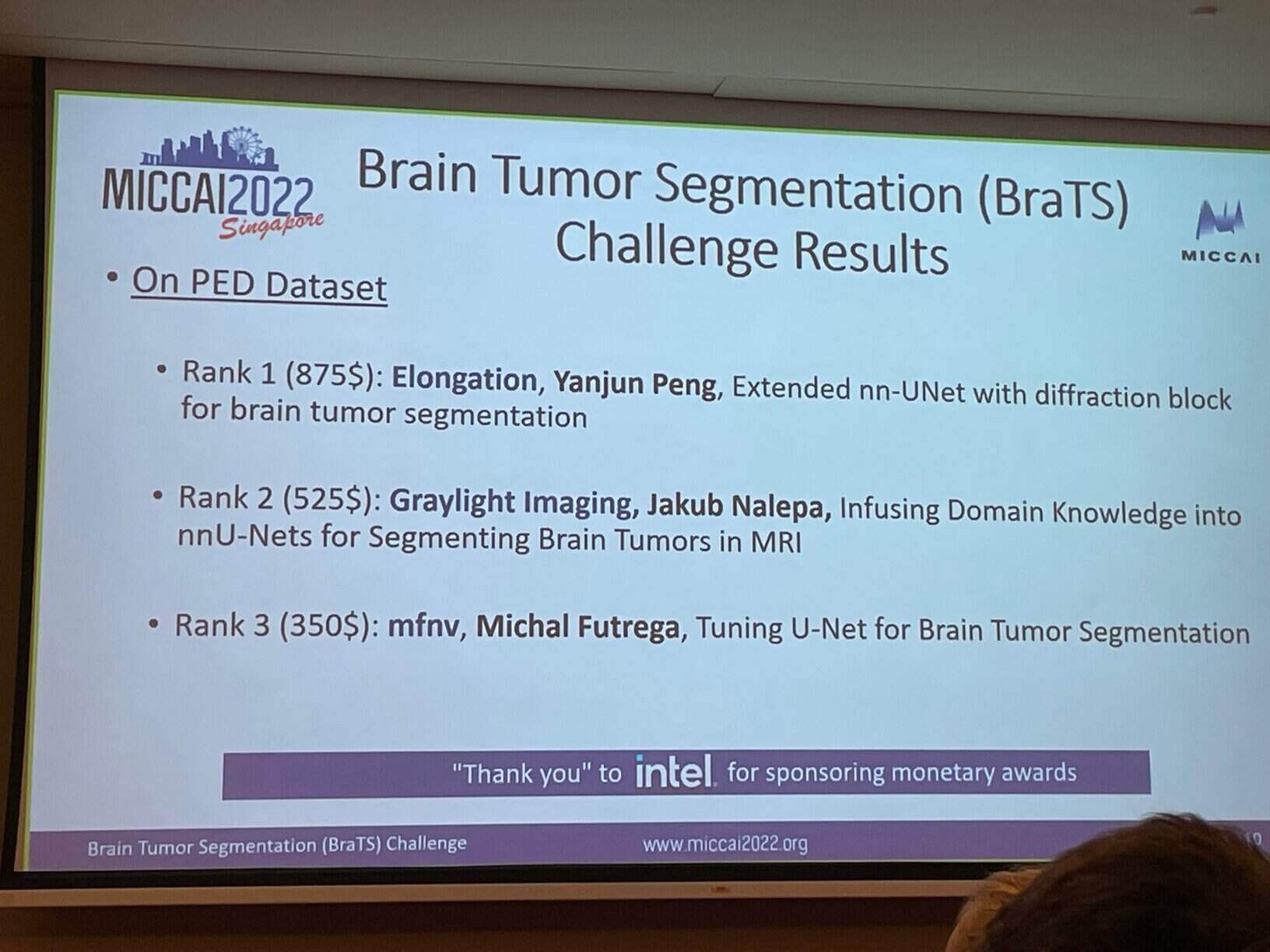Brain tumor segmentation challenges – Graylight Imaging’s success
Brain tumors are one of the most lethal kinds of cancer. Glioblastoma is the most frequent and severe malignant primary central nervous system tumor. You may characterize it by high inherent variability in appearance, shape and histology and unfortunately a very poor survival rate. We have been working on AI-enabled brain tumor segmentation and AI measurements for the past several years. In 2021 we informed you that our data scientists were top-ranked in RSNA-ASNR-MICCAI 2021 Brain Tumor Segmentation (BraTS) Challenge. Moreover, in the 2022 edition, they did even better.
Brain tumor segmentation challenges
We entered our system in two contests in 2022: the Brain Tumour Segmentation Challenge 2022 and the Federated Tumour Segmentation Challenge 2022 (FeTS). The results were supposed to be announced at International Conference on Medical Image Computing and Computer Assisted Intervention MICCAI 2022 held from September 18th to 22nd in Singapore.
FeTS initiative and challenge: the 2022 edition
International competitions have established the de facto norm for validating medical image analysis algorithms. However, the question about their performance on real-world data and the clinical environment remains. That’s exactly why FeTS is so exceptional: every brain tumor algorithm is evaluated based on real-world data from 32 independent institutions from the collaborative network of the FeTS Initiative [1]. Its initial edition was also the first federated learning challenge ever presented. In this challenge, our team took on the second task (“Federated Evaluation, in-the-wild”), which required participants to explore algorithmic generalizability on out-of-sample data using federated evaluation of segmentation algorithms. We are delighted to inform that the Graylight Imaging team came in second place, just one position behind the champions!

Brain Tumor Segmentation Challenge 2022
But that is not the end of great news. This year’s edition of BraTS challenge was very different from past editions – and everything because of datasets.
BraTS is a yearly event that has become a cornerstone for evaluating and advancing automated brain tumor analysis in medical imaging. Participants work on the very same datasets. However, they use various methods and techniques to improve the performance of the submitted algorithms and their potential for generalization.
In 2022 algorithms were tested on 3 different datasets:
- BraTS 2021 testing dataset.
- SSA dataset: an independent multi-institutional dataset. It covered underrepresented Sub-Saharan Africa adult patient populations of brain diffuse glioma.
- PED dataset: an independent pediatric population of diffuse intrinsic pontine glioma patients.
Our team’s deep-learning model placed second on the PED dataset and third on the SSA dataset. It demonstrated its superior performance and generalizability.
We want to express our warmest congratulations to the entire team. We are honored to have received such acclaim for our work, which was up against models created by world-class specialists in AI-enabled medical image analysis and tumor segmentation.

Technology in the service of medicine
We strongly believe that the development of AI technology is crucial for treating patients. Especially those with glioblastomas and other low-survival-rate cancers. Quicker intervention and potentially more effective treatment strategies are crucial in a combat with aggressive neoplasms. Deeper analysis of patient scans allows not only for the identification and measurement of tumors. It can differentiate between different types of cancers, analyze tumor’s subregions and other characteristics. While these cancers still have a poor prognosis, algorithm development offers a powerful tool to improve diagnosis, treatment options, and patient outcomes.
References: